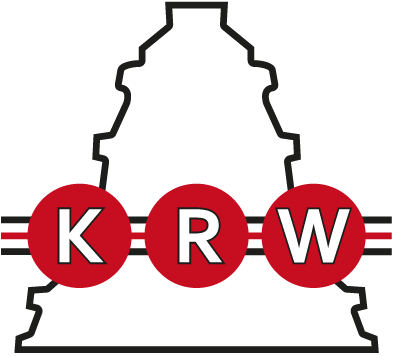
Storage and Durability of Bearings
Basics
The storage time of rolling bearings is very much influenced by environmental conditions such as temperature or air humidity. It is therefore advisable to keep the storage time for rolling bearings as short as possible. The basic principle "first in, first out" should be adhered to.
If the storage time is exceeded or if the packaging and preservation are visibly damaged, the condition of the rolling bearings must be checked for corrosion and / or damage.
Rolling bearings without preservation are generally very susceptible to corrosion. The removal of the bearings from the original packaging, as well as their handling and installation, should always be carried out with suitable protective gloves. If direct contact cannot be avoided, the bearings must then be cleaned and preserved with a compatible anti-corrosion agent or oil.
If the bearing is contaminated with liquid or solid contaminants despite all precautionary measures, it must be thoroughly washed out with a applicable agent before installation. Solid, mineral particles in particular can lead to premature failure of the bearing during operation.
Preservation
Rolling bearings are usually treated with corrosion protection in addition to the packaging. The agent used can vary depending on the manufacturer.
KRW rolling bearings are treated with powerful long-term corrosion protection. The corrosion protection agent used is compatible with most oils and greases and can be mixed, which means that in most cases it is not necessary to wash the bearings before use. If special lubricants are used, the compatibility must be checked.
Storage Period
A general storage period for rolling bearings cannot be clearly defined. It varies greatly depending on the storage conditions. The following information applies to KRW rolling bearings. The storage time for the standard packaging is at least 2 years and for the sea packaging at least 3 years. This time frame is valid from the time the rolling bearings are packaged ex works and requires the following storage and transport conditions.
Storage Conditions
The following storage conditions guarantee the minimum storage time for the rolling bearings. They also provide important information on the correct storage of the rolling bearings.
-
Rolling bearings should only be stored horizontally and supported on the entire circumference of the ring side surfaces.
-
Rolling bearings must not be stored in a stack or subjected to constraining forces during storage.
-
The storage room must not be subject to major temperature fluctuations.
-
The relative air humidity should not exceed the following standard values:
75% at 15°C // 65% at 20°C // 55% at 22°C // 50% at 25°C // 45% at 28°C
The data on air humidity and temperature are KRW measurement evaluations. These may differ from the data of other manufacturers.
-
Rolling bearings must be kept in the unopened original packaging and only removed immediately before installation.
-
No labels or other designations may be removed from the original packaging.
-
If the rolling bearing is kept after opening the original packaging, suitable preservation measures must be taken.
-
No aggressive media such as gases, mists or aerosols may act during storage.
-
Rolling bearings must not be stored for long periods under the influence of direct sunlight.
-
The storage location must not be exposed to permanent vibrations or shocks to prevent damage to the rolling bearing (downtime marks or "false brinelling").
Transport Conditions
The following basic rules apply to the transport of rolling bearings:
-
The bearing must be transported on a stable base and secured against slipping and tipping.
-
Rolling bearings can only be transported horizontally and supported on the entire circumference of the ring side surfaces.
-
The stacking of rolling bearings – even in the original packaging – is generally not permitted.
-
Rolling bearings must be protected against environmental influences and transported without the influence of large temperature fluctuations.
-
To avoid standstill marks, the transport must be carried out vibration-free or at least vibration-damped.
This information is generally valid. If the measures are followed, transport damage to the rolling bearings can be avoided very reliably.
